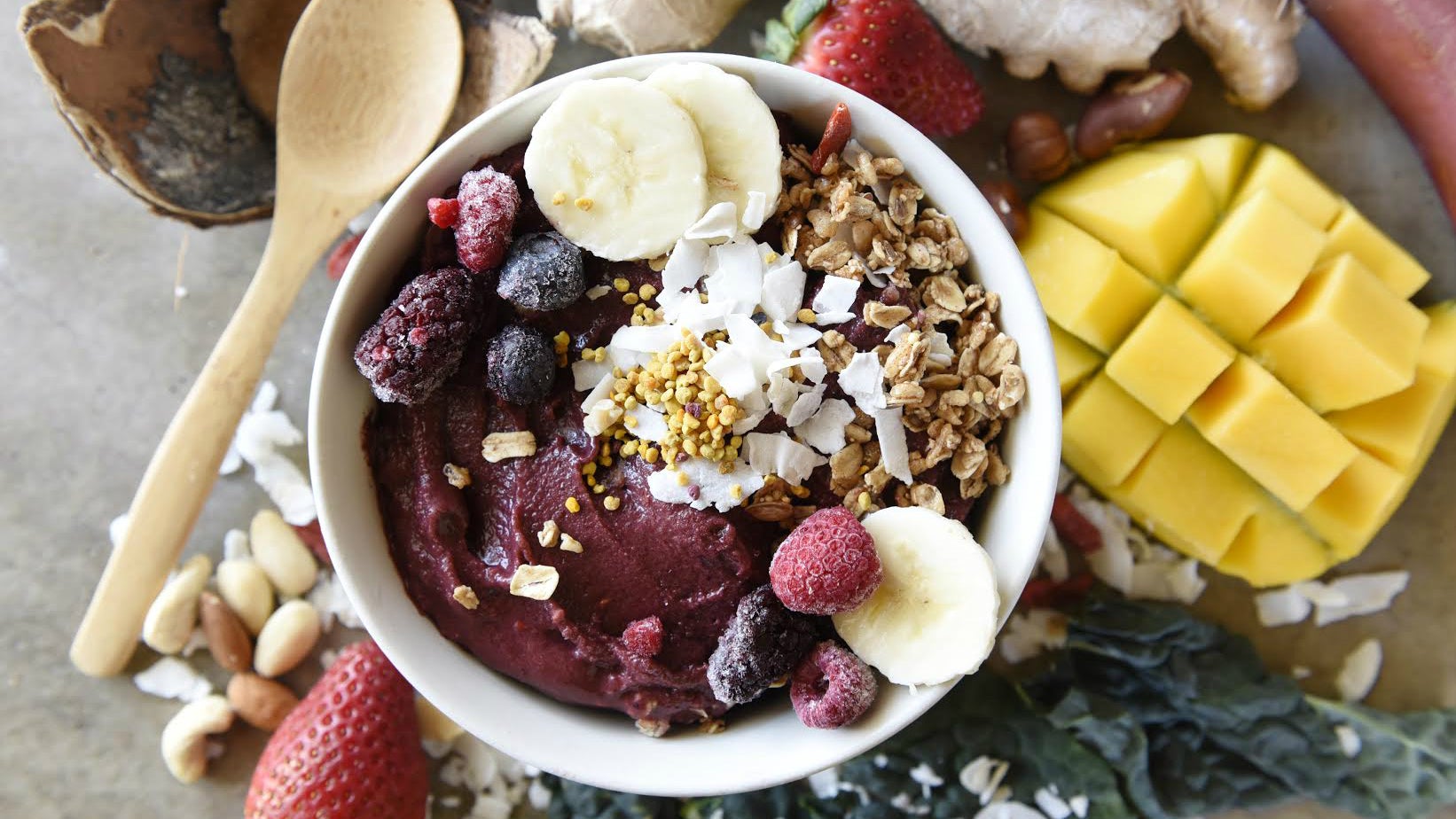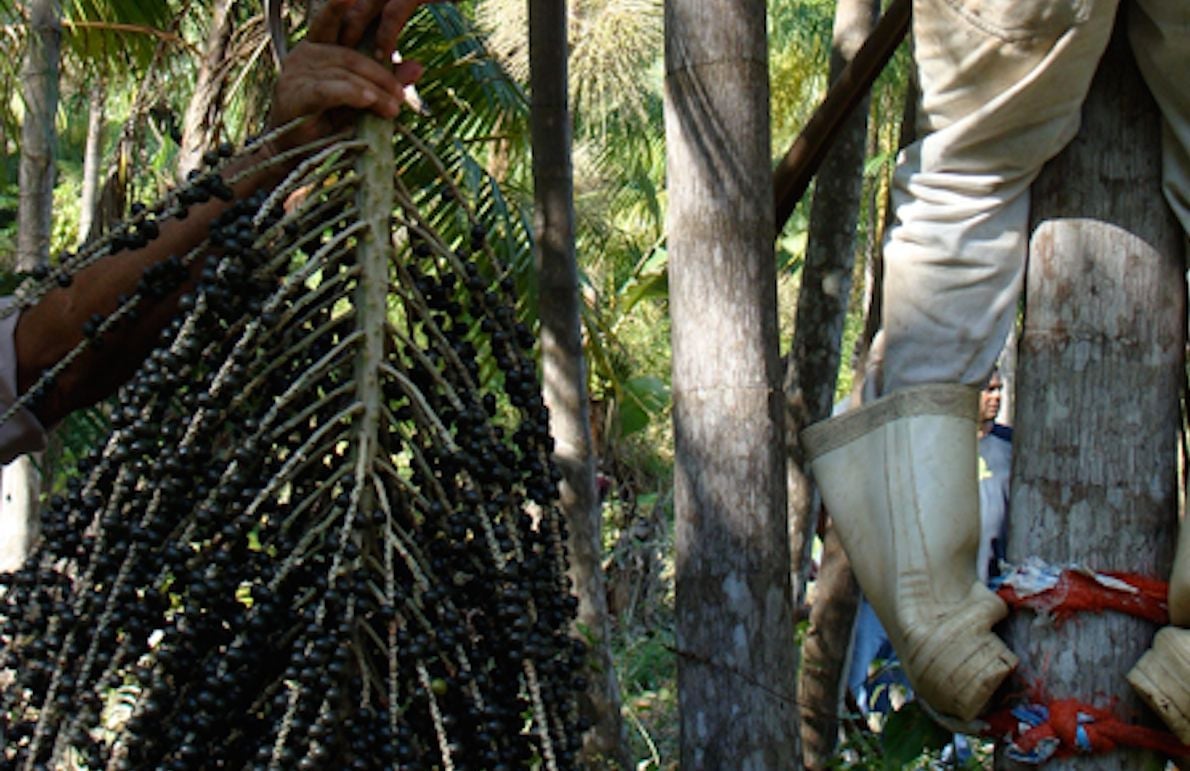The Brazilian breakfast preferred by Olympic athletes is one you can make at home
Any curious food lover who has spent time in Rio de Janeiro likely returned home with a craving for açai: an Amazon fruit most commonly enjoyed as a smooth, deep indigo frozen beverage with an velveteen sheen. Now it seems Olympic athletes will too. US women’s soccer forward Alex Morgan, diver David Boudia, and Australian BMX cyclist Caroline Buchanan have all broadcast their love of the Brazilian delicacy, made from açai.


Any curious food lover who has spent time in Rio de Janeiro likely returned home with a craving for açai: an Amazon fruit most commonly enjoyed as a smooth, deep indigo frozen beverage with an velveteen sheen. Now it seems Olympic athletes will too. US women’s soccer forward Alex Morgan, diver David Boudia, and Australian BMX cyclist Caroline Buchanan have all broadcast their love of the Brazilian delicacy, made from açai.
“It’s a big part of our diet here,” Morgan told the AP.
What is açai—and how do you actually say it?
Açai, which grows on palm trees in the flooded regions of the Amazon, just might be one of the world’s most misunderstood fruits, beginning with its proper pronunciation: ah-SIGH-ee. The fruit is actually not a berry, but a a stone fruit (also known as a drupe). Açai is approximately the size of a blueberry, and mostly comprised of a hard, stone-like seed. That seed is surrounded by a thin, lime-green layer of omega-rich fats and covered with a deep indigo-colored skin—a source of antioxidants. Even in Rio, where açai smoothies are available at corner stands all over the city, most people have never seen the fruit in its whole state. Because it’s highly perishable, açai fruit is soaked, separated from its seed, and processed as frozen pulp for export to markets outside the Amazon as soon as its picked.

But that hasn’t impeded its popularity. In Rio it is traditionally blended with guarana, a fruit-derived syrup that adds sweetness and a caffeinated kick to the otherwise subtle tasting fruit. (In the Amazon, açai puree is commonly served unsweetened, and topped with puffy pieces of tapioca.) As açai has spread to North America, so has the popularity of the açai bowl: a layered, multi-textured meal with frozen açai puree as its base, which appears to be the choice breakfast of Olympic champions. US women’s soccer coach Jill Ellis joked that the team consumed some 20 bowls before their victory against France earlier this month. (No word on what the team ate before their loss to Sweden.)
How to make it
You don’t have to go all the way to Brazil—or even to an overpriced juice press—to try açai. Sambazon, a southern California based company that imports organic and fair-trade açai to the US, sells frozen packets of açai pulp that you can drop into your blender at home. Sambazon’s “original style” pulp—which includes that sweet guaraná extract—was the closest I came to a Rio-style juice stand açai upon my own return home from Brazil several years ago. I prefer mine blended with banana, honey, ice, and a splash of milk or water, but recipes abound. Just drop a packet of frozen pulp in the blender, add a little bit of fresh or frozen fruit (bananas and berries are popular choices), a splash of juice, milk, or water, and let the blender rip. To make your smoothie into a proper açai bowl, try adding layered toppings such as sliced strawberries, shredded coconut, and granola—as Food52 suggests—or find more adventurous inspiration on Sambazon’s website, where ingredients including peanut butter and cacao powder add protein and flavor to the açai base, while toppings like hemp seeds, cashews, and cacao nibs add texture. If you’re a Pinterest person, you might place all these layers in a Mason jar and take a picture.
`